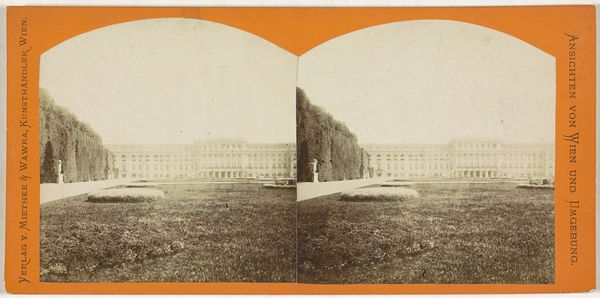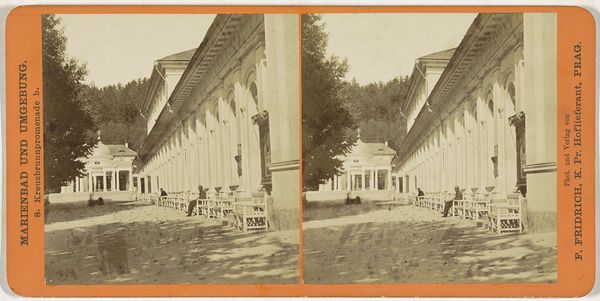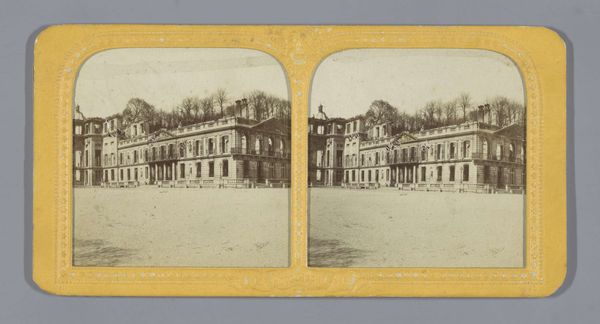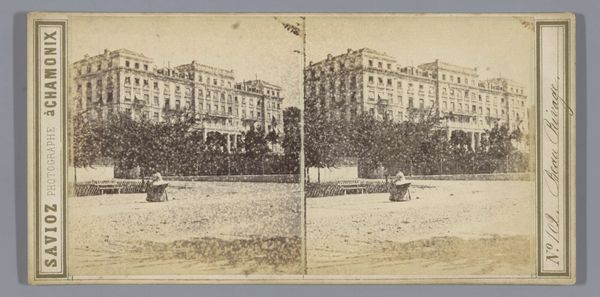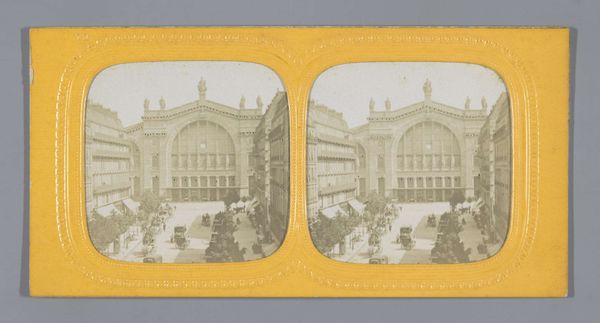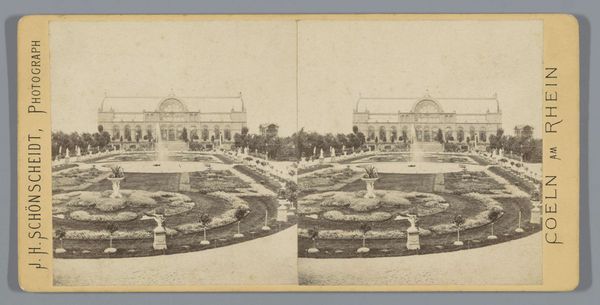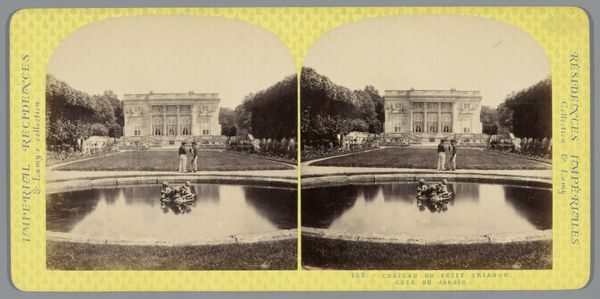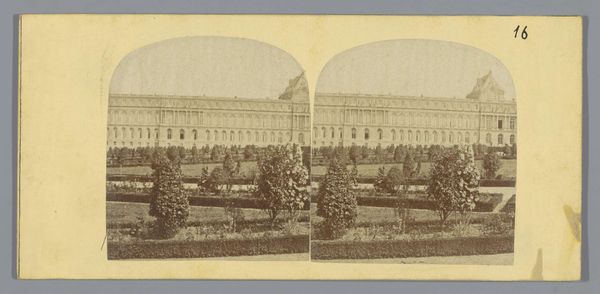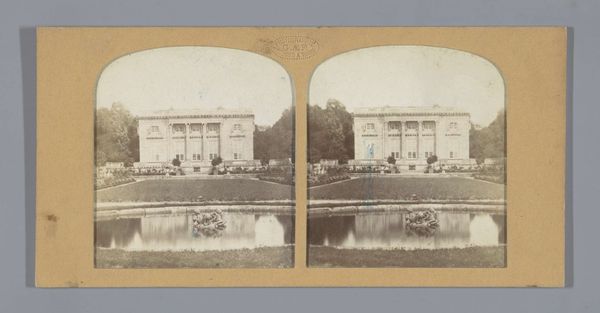
photography, albumen-print, architecture
#
landscape
#
photography
#
cityscape
#
albumen-print
#
architecture
#
building
Dimensions: height 85 mm, width 170 mm
Copyright: Rijks Museum: Open Domain
This stereoscopic photograph of the Kurhaus at Bad Homburg was made by František Fridrich, using the wet collodion process – a technique that defined photography in the mid-19th century. The process involved coating a glass plate with chemicals, exposing it in the camera while still wet, and then developing it immediately. This demanded speed and skill, making photography a blend of science and craft. The collodion's sensitivity created images with remarkable detail and tonal range, evident in the architecture and the chairs in the foreground. Yet, the process also had its limitations. It required a portable darkroom, making outdoor photography a logistical challenge. Fridrich's choice of this method reflects his commitment to capturing the world with the best available technology, despite its difficulties. This early photograph is thus not just a record of a place, but also a testament to the labor-intensive processes that gave rise to the modern world of images.
Comments
No comments
Be the first to comment and join the conversation on the ultimate creative platform.

